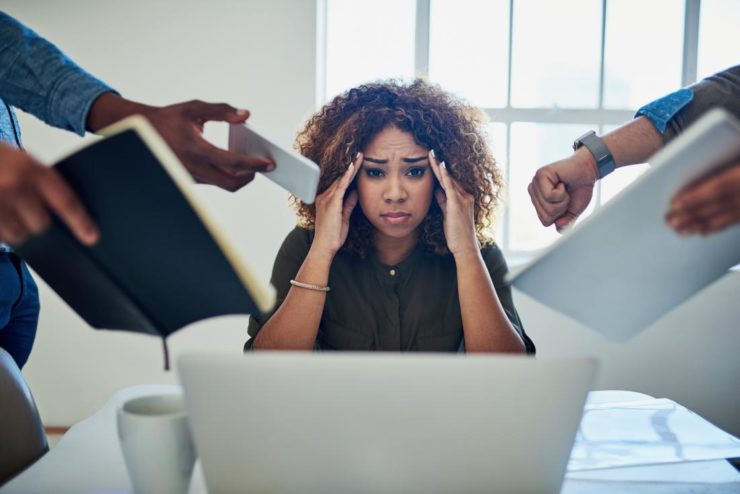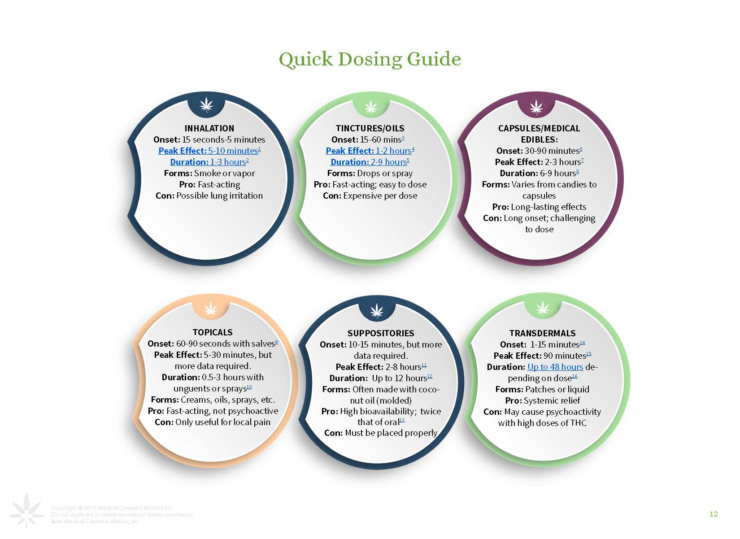Stress can make you feel like you’re in a fog or that everything’s moving in slow motion, especially during COVID-19. Here’s how to use cannabis to lower stress.

These days, the majority of patients are contacting me for three reasons: 1) insomnia, 2) anxiety 3), and managing PTSD (trauma) symptoms, all of which can be stress-related. So I thought it was an excellent time to address the impact of COVID-19 on everyone’s stress levels and the ways cannabis and other plant medicines can be mindfully used to alleviate some of the symptoms. Used correctly, cannabis can help put you in a relaxed state, which makes it a key ally in fighting stress. There are several biochemical reasons why this so so please read through these questions. It is my hope that the answers within will guide you to less difficult days and nights!
Why do I feel so out-of-focus? I was going to use all of this extra time to learn tap dancing and read Proust, but I’ve never been less productive.
I’m not sure cannabis can help you finish Proust, but it can certainly soothe your stress responses, which could encourage your productivity.
Intense trauma can temporarily rewire the body’s nervous system and trigger our sympathetic nervous system, which activates our “flight or fight” response. Keeping up with the sheer amount of COVID-19 information (and misinformation) coming at us can put your nervous system into a constant white-knuckled response. Hyperarousal means higher blood pressure and adrenaline release, shallow breathing, and rapid heartbeat, all of which translates to short-tempers and blown fuses. It can also cause people to re-experience traumatic memories that create a cycle of being too agitated to relax and too stressed to sleep. These changes can impair the immune system’s ability to respond to acute and chronic infections and can disrupt digestion, sleep, focus, and libido. It can also make people feel like they are in a fog or that everything is moving in slow motion. Sound familiar?
But I haven’t been traumatized. I’m just worrying about my health, my family’s health, the health of the economy…
You don’t have to be directly exposed to a traumatic event. Right now, fear is more prevalent than the virus. Simply contending with overwhelming situations and information overload can affect some people so profoundly that they develop symptoms of PTSD, which can include:
- anxiety
- sensitivity to light and sound
- insomnia due to racing mind or trouble staying asleep
- irritability and jumpiness
- emotional sensitivity
- heart racing/palpitations
- blood pressure changes
- digestive issues
Cannabis is a holistic, integrative plant medicine that can ease the body into a state of calm. When used correctly, it can:
- improve mood
- reduce anxiety
- promote restorative sleep
- suppress nightmares.
How can cannabis help anxiety and stress?
Did you know that our brains make their own internal cannabis molecules? It’s true. And one of them, anandamide (named after the Sanskrit word for bliss, ananda), helps temper stress and balance the nervous system, so we are not spiraling out of control on high sympathetic overdrive.
“More ‘carefree’ folks have brains that produce higher levels of anandamide, the body’s own version of THC.”
Take, for example, forgetting. Forgetting is a crucial aspect of treating anxiety, stress, and PTSD. Trauma survivors have been found to have problems with neurotransmitter signaling of serotonin and glutamate, which also correlate with the fight-or-flight response. Excessive glutamate signaling will lock in painful fear-related memories. Cannabinoids can help release these painful memories by facilitating memory extinction. This helps survivors switch off those traumatic memories.
Here’s the chemistry behind this. Cannabis mediates the neurotransmitter GABA. GABA signals to our body that we are safe and directs the body to relax. It helps to reduce anxiety, foster sleep, and relax the muscles. CBD and THC tell the brain to increase the flow GABA, which creates a calming effect. My patients report it taking the edge off and turning down the volume on anxiety and stress. Once their racing thoughts and the “fight or flight” response tail off patients say they feel better, or “more comfortable in their own skin.” They can often quell racing thoughts that paralyze them at work or cause them to lie awake at night.
If you’re not an experienced cannabis user, I recommend starting with CBD, which can ease the body into a state of calm focus, or very low amounts of THC in conjunction with CBD. Sometimes, just a few puffs on a vaporizer or no more than 2.5 mg of THC will do the trick. You can always add more if you want increased relief.
It seems that my girlfriend is responding to cannabis so much more strongly than me (I’m a guy). Are there gender differences?
Not only do women and men respond to cannabis differently, but they also respond differently to PTSD. Statistics show that women suffer twice as much PTSD as men, but because the majority of trauma research focuses on male combat veterans, this gender difference is overlooked. According to the National Center for PTSD, around 10% of women suffer from PTSD sometime in their lives compared to 4% of men.

Thanks to the hormone estrogen, women are more sensitive to the effects of the cannabinoids and terpenes that the plant contains. We experience several distinct physiological changes throughout our lives (pregnancy, menopause) that drastically alter the amount of estrogen in our system. Understanding how cannabis can help us regulate hormonal flux and ease these transitions can be a revelation for women interested in health and wellness. Estrogen makes women more sensitive to cannabis, primarily THC. THC and your hormones interact quite, so your cycle can impact your high.
Researchers at Washington State University found that women experience the effects of THC most powerfully when their estrogen has peaked and is beginning to fall. This happens a day or two before you ovulate. Preclinical studies have shown that estrogen makes women more sensitive to THC, which is why women seem to benefit from its pain-relieving qualities more than men.
My husband is so much more carefree than I am. He also uses more cannabis. What’s the relationship between high use and low stress?
Recent neuroscience research has shown that certain lucky people have a genetic variation in the brain that makes them inherently less anxious and more able to forget unpleasant experiences. These “more carefree” folks, also have brains that produce higher levels of anandamide, the body’s own version of THC. Normal endocannabinoid system functioning helps people’s nervous systems reset and re-calibrate more quickly after stress exposure. Researchers and clinicians agree that vulnerability to PTSD and stress resilience are the result of an interaction between ECS, genes, and environment.
How much cannabis should I use to keep my stress at bay?
That’s the big question with cannabis meds. Everyone’s endocannabinoid system is different, and people’s experience with cannabis also makes a difference when it comes to dosing. My 15 years of treating patients with cannabinoid medicines have taught me that patients who are willing to experiment to create their own personal dosing regimen get the best results.
The “Start Low, Go Slow, Stay Low” dosing method begins with a CBD product, which you take in low doses (5-15 mg) two to four times daily. You can very safely increase that dose every 1 or 2 days until you feel relief. If you get no relief after a few weeks, try adding in a small amount of THC (2.5 mg of a tincture or a few vapor puffs) to activate the CBD. Escalate your dose or increase the frequency of dosing until you find relief. Inexperienced users may want to work with a health coach to get started. Experienced users will be more familiar with adjusting their doses to find optimal relief. The dosing guide below lists the average activation times, and length of time effects will last.

What else can I do?
The other side of the sympathetic nervous system is the parasympathetic nervous system, which releases all sorts of chemicals to help us feel relaxed and safe. The parasympathetic system regulates digestion, our connection to others, and sleep, which is the only time the body can repair itself. Cannabis helps to ease the body into the parasympathetic nervous system.
In her upcoming book, Good Chemistry, the psychopharmacologist Dr. Julie Holland lists a few things patients can do to flip from “fight or flight” into the “tend and befriend” mode. I’ve used some of these techniques with patients over the years. They may sound simple but they work.
Breathe through your nose. Believe it or not, simply breathing through your nose for five or ten minutes can snap you out of fight or flight. This is because taking shallow breaths through the mouth can trigger the sympathetic nervous system.
Balance the flow of negative thoughts. If you can’t stop thinking about how terrible things are, at least give equal time to fantasizing about other things working out ok, or even well.
Sing, chant, or make music.
Swim or float on your back with your arms and legs wide. If you can get to a sensory deprivation tank where it’s dark and quiet, the body can stop paying attention to sensory input, and the mind can be more free.
Havening. This is a self-soothing technique in which you cross your arms like you’re hugging yourself. There are plenty of videos online.
Get out in nature. Cannabis helps connect you to your body and the natural world. The vastness of the natural world can help you put your concerns in perspective.
Do nothing. Put down your phone. Get off your screens. Focus on your breath or something in your field of vision. As Julie writes, “Try to be as fascinated by your breath as your Instagram feed. If you stop what you’re doing, sit down, pay attention to your breath instead of what you’re going to make for dinner, don’t tell anybody, but you’re meditating.”
